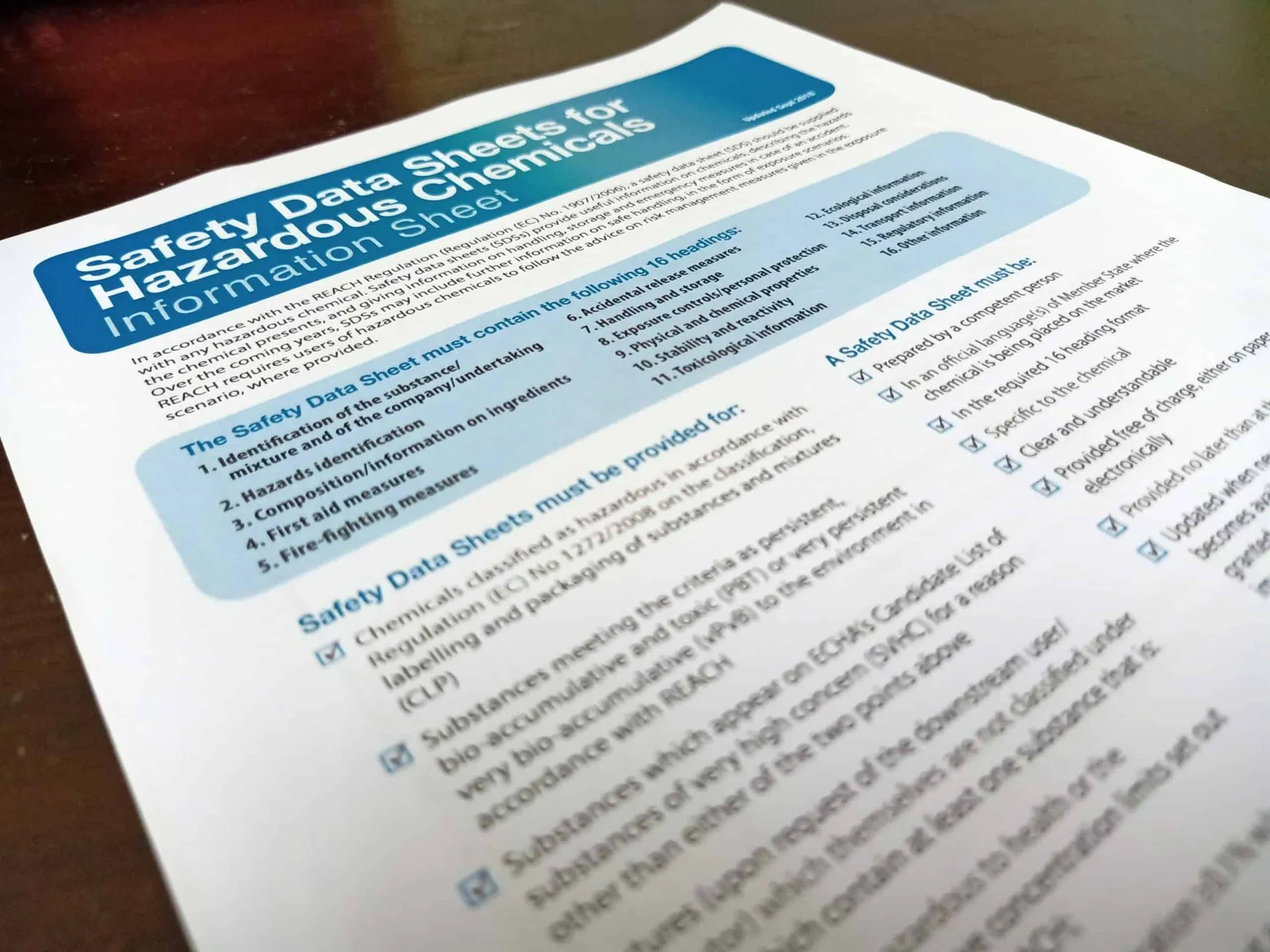Our client, a Fortune 500 consumer and professional products manufacturer, required translation of 128 safety data sheets (SDS) into Canadian French in a cost-effective, time-sensitive manner - all while maintaining the utmost technical accuracy and precise adherence to regulatory-compliant terminology.
The primary and backup project managers conducted a thorough analysis to determine the best approach to meet our client’s needs.
They discovered a high-level of repetition amongst the documents due to their similar formats and properties which led to a project plan with a greatly abbreviated delivery schedule, at a cost well within the client’s budget.
The ever-evolving chemical regulatory environment presents hazard communicators with a multitude of challenges: what are the safety data sheet and labeling requirements for the country to which we’re exporting? What are the section headings and precautionary/hazard statements as prescribed by the national regulations of that country?
Have these requirements changed recently?
These are the questions our client, a major SDS authoring business, was dealing with when they engaged GLTaC for help.
Our EHS translators work with these very regulations on a daily basis in order to produce the most accurate, compliant translations, so GLTaC was already well-prepared for the task.
We advised the client on the current terminology in national regulations and provided templates for their effective utilization.
The client is now able to quickly and easily respond to changes in regulations around the world, and we continue to advise them on the timing and content of updated texts.
The military client was experiencing several challenges, ranging from staff turnover and budget cuts to limited support resources. All these challenges combined to create a situation where a large volume of translation work existed, and the cycle of preparing new material for translation, reviewing delivered translations, and training with the translated material prevented the creation or updating of glossaries, style guides and other reference documents. The lack of updated reference material was creating inconsistency in the final translations delivered by multiple contractors.
GLTaC undertook the task of creating an updated glossary based on the large amount of text we were translating (over twelve million words to-date). In addition, we developed an acronym list that covered the acronyms in both the source and target language where equivalents existed. In the case of the style guide, the original version stated a specific font type and size, with no other instructions. The more material GLTaC translated, the more questions arose in terms of style, such as when to leave terms in English, how to handle city names, map legends, vehicle nomenclature, all the way down to page numbering, how to list reference links (translated or not?), glossary entries (alphabetical by English or Target Language?) and a long list of similar items.
By taking the initiative and leading the effort to update, standardize and create all these reference items where they were outdated or non-existent, GLTaC established itself as a government contractor willing to do more than just the minimum required by adding value whenever possible.

A major SDS authoring company had work done by another large, well-known translation agency, and the work was not done properly. The translation project was key to their core business and if not done correctly, jeopardized the client’s entire business offering. This client was certainly in distress and needed an urgent solution to a large problem.
GLTaC understood the requirement and immediately began working with the client to do a proper translation. The task put before us was not merely translation, but also more of a review with an assurance that the translations were done in accordance with current, applicable regulatory requirements (this was for a highly regulated industry). There were additional requirements, such as stating a reason for any changes made to the existing translation, identifying text that was incorrect in the source language, identifying which regulations were the best to apply, identifying and removing duplicates and so on. The requirements were extensive to say the least.
Work began in earnest and as our translators began to go through the files, many issues arose, necessitating communication with the client for clarification. In a short span of time, the project was generating roughly 120 emails per day. The client asked us to maintain a record of all the changes to the source file, and to help track all the modifications to the text made by our translators as each translator found something else to correct.
Two weeks prior to the delivery date, the client felt there were enough issues with the source text that it needed a thorough review. We were already up to over 60 changes at that point, and on track to hit the delivery date. After a weekend’s review, a spreadsheet arrived from the client with over 200 more changes. The next day a completed spreadsheet arrived that expanded that list to over 420 changes in total. When we looked at the scope of changes across the 36 languages, we were tracking over 15,000 changes.
Managing this in an Excel file would be a challenge, but doing it with an XML file required a whole new level of file manipulation expertise. Just keeping track of all the various changes and codes that went with each language was a huge task. Teamwork became critical insofar as one project manager focused on tracking changes and the other did all the file manipulation mechanics.
Due to the XML file, automated QA techniques were not practical, so a manual review process took place, with multiple editors scanning every line of translation for errors, spacing, punctuation, correct placement of special programming codes, and proper tags for the XML formatting, etc. for over 600,000 lines of text.
The client was very happy with the results and timing of this project and indicated that after our effort their client complaints dropped by 90%.